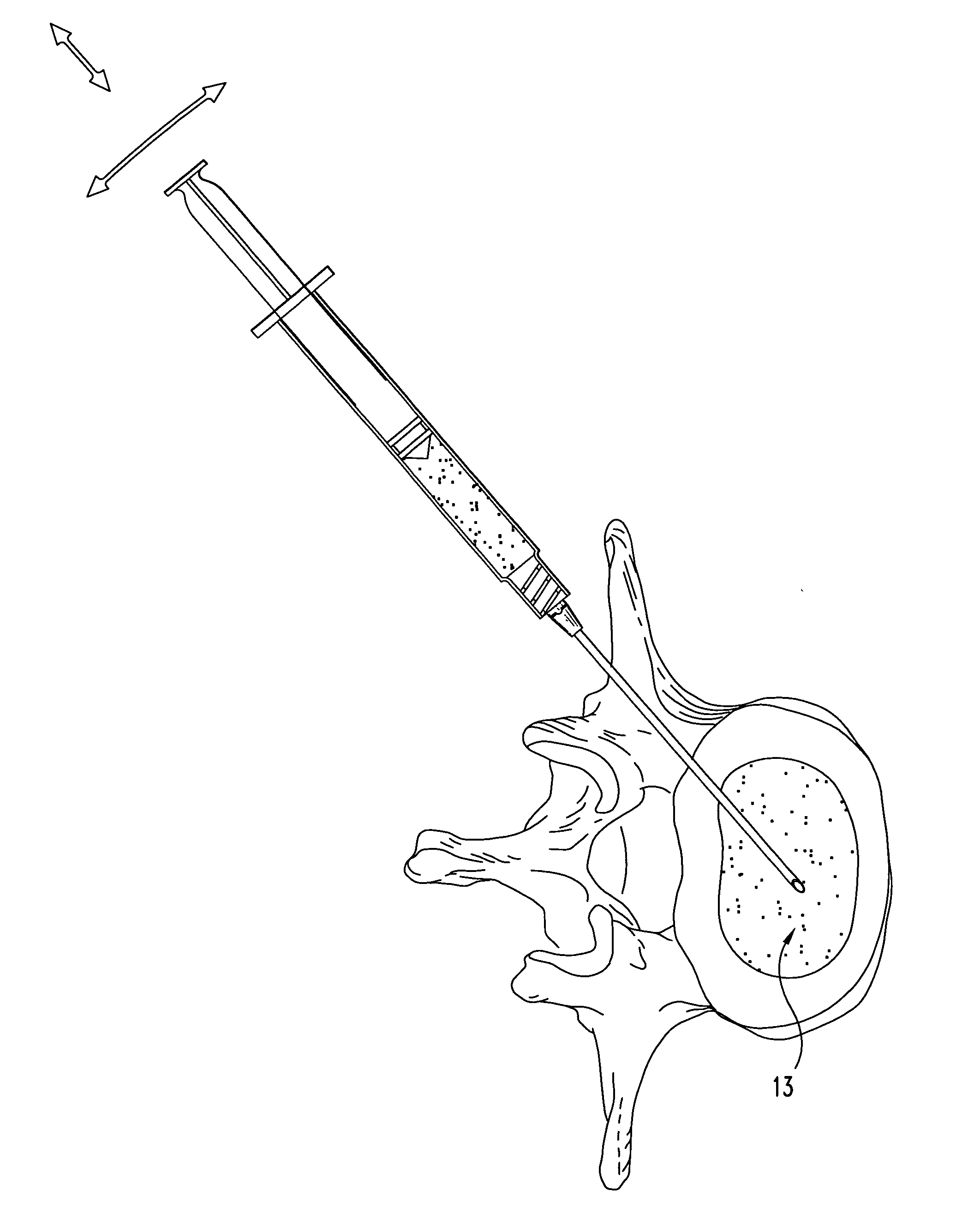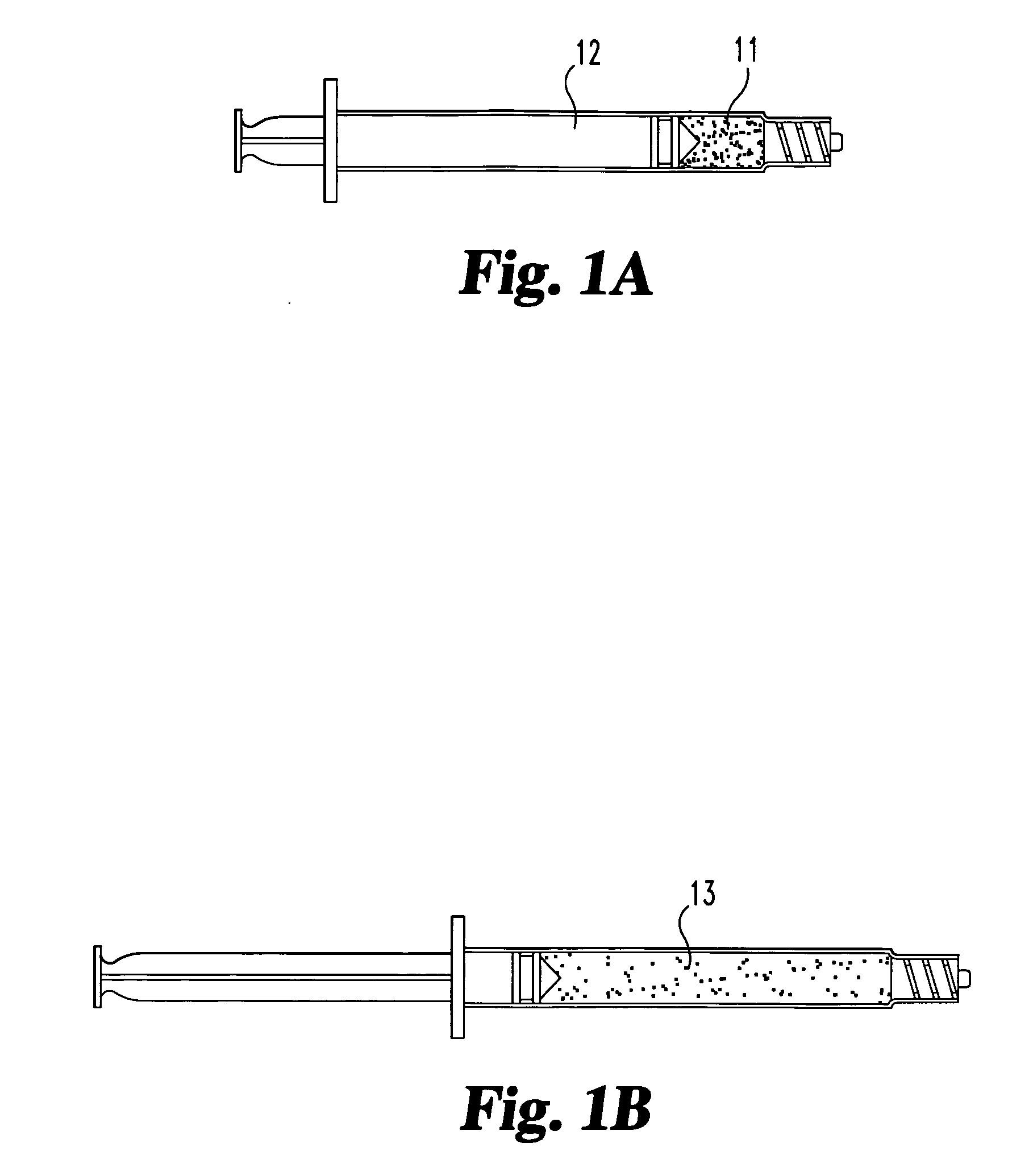Compositions and methods for treating intervertebral discs with collagen-based materials
a technology of intervertebral discs and collagen-based materials, which is applied in the field of collagen-based materials for treating intervertebral discs and/or synovial joints, can solve the problems of limited repair capacity, discomfort for patients, and affecting the ability of the vertebral body to adequately cushion and support, so as to promote healing and/or proper disc function, the effect of enhancing the imaging of the injected material
- Summary
- Abstract
- Description
- Claims
- Application Information
AI Technical Summary
Benefits of technology
Problems solved by technology
Method used
Image
Examples
example 1a
Hydrated Particulate Fascia Lata
[0055] A suspension of particulate or fibrous (autologous or allogenic) fascia lata is prepared in a biocompatible medium such as saline or ethylene glycol. The particle size ranges from 0.1 mm to 5 mm, with most particles being between 0.25 and 2 mm.
[0056] The suspension is injected directly into the nuclear disc space through an intact annulus using a hypodermic needle, and is contained within the disc space following injection. The medium subsequently diffuses out of the disc space and leaves the fascia lata material behind.
[0057] Inspection of the disc reveals that an appropriate level of augmentation may be obtained with a single injection of material. Alternatively, several smaller doses / injections may be used to achieve comparable results.
example 1b
Hydrated Particulate Fascia Lata with Crosslinking Agent
[0058] A suspension of particulate or fibrous (autologous or allogenic) fascia lata is prepared in a biocompatible medium such as saline or ethylene glycol. The particle size ranges from 0.1 mm to 5 mm, with most particles being between 0.25 mm and 2 mm. A glutaraldehyde crosslinking agent is added to promote collagen crosslinking.
[0059] The suspension is injected directly into the nuclear disc space through an intact annulus using a hypodermic needle, and is contained within the disc space following injection. The medium subsequently diffuses out of the disc space and leaves the fascia lata material behind.
[0060] Inspection of the disc reveals that an appropriate level of augmentation may be obtained through either a single injection of material, or by multiple injections.
example 1c
Dehydrated Particulate Fascia Lata
[0061] Dehydrated fascia lata material is provided in particulate form. Particle sizes range between 0.05 mm and 3 mm, with most particles being between 0.10 mm and 1 mm. The dehydrated material is loaded in a specially designed syringe for delivery of solid materials.
[0062] The material is extruded into the nuclear disc space of the treated disc through a small dilated annular opening. The material remains inside the disc space after the needle is removed. It subsequently absorbs moisture or body fluids and swells up in vivo.
[0063] Inspection of the disc reveals that an appropriate level of augmentation may be obtained through either a single injection of material, or by multiple injections.
PUM
| Property | Measurement | Unit |
|---|---|---|
| Length | aaaaa | aaaaa |
| Length | aaaaa | aaaaa |
| Particle size | aaaaa | aaaaa |
Abstract
Description
Claims
Application Information
 Login to View More
Login to View More - R&D
- Intellectual Property
- Life Sciences
- Materials
- Tech Scout
- Unparalleled Data Quality
- Higher Quality Content
- 60% Fewer Hallucinations
Browse by: Latest US Patents, China's latest patents, Technical Efficacy Thesaurus, Application Domain, Technology Topic, Popular Technical Reports.
© 2025 PatSnap. All rights reserved.Legal|Privacy policy|Modern Slavery Act Transparency Statement|Sitemap|About US| Contact US: help@patsnap.com



